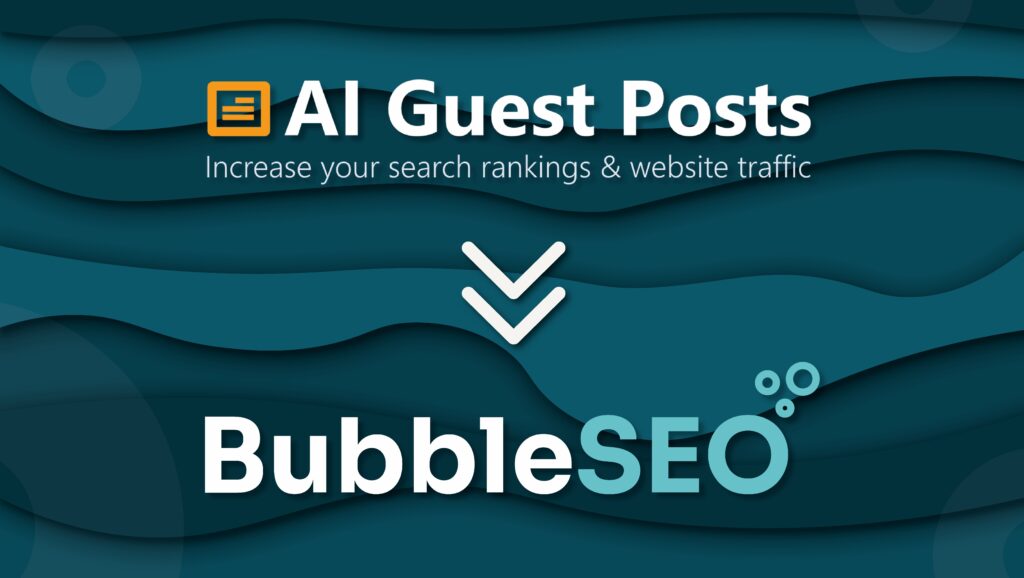
Using content marketing within your business has many benefits.

Backlinks are links are an important factor in SEO as they are a sign of credibility and relevance.

Backlinks are links from other websites that point to your website. They are an important factor in search engine optimization (SEO) because search engines view them as a sign of credibility and relevance. However, not all backlinks are created equal. There are good backlinks that can boost your website’s ranking and bad backlinks that can harm it.
Good backlinks are those that come from reputable and relevant websites. They are usually obtained naturally because other websites find your content valuable and want to link to it. Good backlinks are typically:
On the other hand, bad backlinks are those that come from low-quality or spammy websites. They can harm your website’s ranking and reputation, and may even lead to a penalty from search engines. Bad backlinks are typically:
Good backlinks are an essential component of any effective search engine optimization (SEO) strategy. Backlinks, also known as inbound links, are links from other websites that point to your website.
Overall, good backlinks are an important factor in improving your website’s visibility, traffic, search engine rankings, credibility, and brand recognition.
Make sure your backlinks come from reputable and relevant sources which help to boost your website’s ranking, and watch out for those bad backlinks!
Grow your business online with content marketing solutions from Bubble SEO today.
Place An Order
The world of SEO is constantly evolving, and staying on top of the latest trends is critical to maintaining online visibility and driving traffic. As we move through this year, some key SEO shifts have emerged that are reshaping the way businesses approach search engine optimisation. Whether you're a content creator, business owner, or digital marketer, these are the SEO trends you can't afford to overlook. 1. Link Building is Evolving Link building remains a core component of SEO, but it's becoming more sophisticated. Google’s algorithms are placing a greater emphasis on the quality and relevance of backlinks rather than sheer quantity. Building relationships with authoritative websites through guest posting and earning editorial links are now essential strategies for creating strong, natural backlink profiles. The focus should be on acquiring links that are relevant to your niche and will offer real value to users. 2. The Power of Content Continues to Grow Quality content is still king, but search engines are becoming smarter about recognising well-researched, authoritative, and relevant information. SEO now demands content that not only addresses user queries but also provides a deeper, more engaging experience. Guest posting is an effective way to distribute this high-quality content, enabling brands to reach new audiences while securing valuable backlinks. 3. User Experience (UX) and SEO Are Now Inseparable With the introduction of Google's Core Web Vitals, the overall user experience has become a critical ranking factor. Fast loading times, mobile-friendliness, and smooth navigation are now essential for SEO success. This means that your site must not only be optimised for search engines but also deliver an excellent user experience to keep visitors engaged. 4. Voice Search Optimisation Voice search is growing rapidly with the increased use of smart speakers and mobile assistants like Siri and Alexa. To stay competitive, SEO strategies need to accommodate more natural, conversational language that aligns with how people use voice search. This trend emphasises the importance of long-tail keywords and question-based content. 5. The Rise of AI in SEO AI-powered tools and algorithms are influencing SEO in unprecedented ways. Google's AI algorithm, RankBrain, helps determine the most relevant search results based on user intent, making it critical to understand the audience’s needs and craft content accordingly. SEO professionals must now consider how AI-driven features, like natural language processing and predictive search, will impact their strategies. 6. Local SEO Becomes More Prominent Local SEO continues to grow in importance, especially for small businesses. Google My Business listings, reviews, and local citations now play a significant role in helping companies appear in location-based searches. If you haven't yet optimised your site and content for local searches, this trend can no longer be ignored. The SEO landscape is always in flux, and staying on top of these trends is crucial for maintaining a competitive edge. Whether through advanced link building, guest posting, improving user experience, or leveraging AI, businesses need to adapt their strategies to the evolving digital ecosystem. By focusing on quality and relevance in every aspect of SEO, you’ll be better positioned for long-term success in search rankings.

When making a guest post, it is important to track your metrics of your site and help you to improve.

I’m sure you will have heard many a time that ‘content in king’! It really is when it comes to attracting visitors to your website. If your site does not contain a blog consider adding this in, the more content your site has the more content available for Google (and other search engines) to index. Your written content should be relevant to your target audience, factual and interesting and ideally articles should be 500 words minimum (for Google indexing purposes). Ensure you are consistent and realistic with the number of pieces you can add to your blog, if one-piece a week is manageable be consistent, post every week.

We're excited to announce that AI Guest Posts has undergone a transformative rebranding and is now known as Bubble SEO. This strategic move has allowed the business to develop within the digital landscape and highlight our commitment to providing digital marketing solutions tailored to enhance online visibility and engagement for our customers. Bubble SEO remains dedicated to delivering high-quality, targeted content and effective SEO solutions that align with evolving digital marketing trends. Here is a little more information about our brand and its services. Our services: At Bubble SEO, we specialise in three core services, with content writing being a new feature to the website: Guest Posting: Which aims to enhance your online presence with high-quality guest posts on authoritative websites, driving traffic and boosting your SEO rankings. Link Building: Helps build a robust backlink profile with strategic link building services that improve your website's authority and visibility. Content Writing: Provides engaging content for your audience with compelling content tailored to your brand voice and SEO needs. Benefits of Bubble SEO: We have now made changes to the booking process to simplify this, and updated the customer dashboard section in the hope to improve our existing values below: Enhanced Service Quality: With our rebranding comes a renewed focus on delivering top-notch services that exceed your expectations. Improved User Experience: Our new website offers a streamlined interface, making it easier for you to navigate and access our services. Expanded Network: Benefit from our expanded network of partner websites, ensuring broader outreach and better opportunities for your business. Loyalty Rewards: As a token of our appreciation for the continued support of our bookers, we have now introduced loyalty rewards: Exclusive Discounts: Enjoy special discounts as a loyal Bubble SEO customer, with the more points you acquire, the more exciting offers you will unlock. We're thrilled about this new chapter as Bubble SEO and look forward to continuing to be your trusted partner in achieving your digital marketing goals. Stay tuned for more exciting updates and announcements! Discover the new Bubble SEO and elevate your online presence today! Jennifer Hobson – Digital Marketing [email protected] Heather Ryan – Business Development [email protected]

In the fast-paced world of digital marketing, staying ahead of Google’s algorithm changes is critical for maintaining visibility and driving traffic to your website. With 2025 already promising exciting shifts in search engine optimisation (SEO), marketers and business owners must remain proactive to safeguard their online presence. At Bubble SEO, we specialise in helping businesses navigate these changes with ease, ensuring their strategies remain effective and future-proof. Here are some practical steps to keep ahead of Google algorithm changes in 2025. 1. Prioritise High-Quality Content Content remains king in 2025, but Google’s algorithms are becoming increasingly adept at distinguishing truly valuable content from low-effort attempts to game the system. To stay ahead: Write for your audience first and foremost, ensuring your content provides real value. Incorporate structured data like FAQs or how-to guides to enhance visibility in search results. Use tools like Google Trends to identify trending topics and tailor your content accordingly. 2. Focus on E-E-A-T Google's emphasis on Expertise, Experience, Authoritativeness, and Trustworthiness (E-E-A-T) continues to grow. Here’s how to align with these principles: Showcase your credentials and expertise on your website. Regularly update content to reflect the latest industry developments. Earn backlinks from reputable sites to bolster your domain authority. If you need help with building high-quality backlinks, check out Bubble SEO’s services for tailored link-building strategies. 3. Embrace AI and Machine Learning AI is playing a major role in shaping Google’s algorithms. Leverage AI tools to: Optimise your content for user intent. Generate predictive keyword insights. Automate repetitive tasks like on-page SEO audits. Stay informed about the latest AI developments with Google’s AI blog, which offers updates and insights. 4. Optimise for Mobile and Core Web Vitals Mobile-first indexing is now the norm, so your website must be fully optimised for mobile users. Additionally, Google continues to prioritise Core Web Vitals, which measure: Page load speed. Interactivity. Visual stability. Use Google’s PageSpeed Insights to identify areas for improvement and enhance your website’s performance. 5. Harness the Power of Local SEO For businesses targeting specific geographic regions, local SEO is indispensable. To stay ahead: Keep your Google Business Profile updated with accurate information. Encourage customer reviews to build trust and authority. Use geo-targeted keywords to capture local search traffic. 6. Monitor Algorithm Updates Closely Being aware of upcoming changes allows you to adapt swiftly. Regularly check for updates on platforms like: Google Search Central Search Engine Journal By staying informed, you can fine-tune your strategy before your rankings are impacted. Conclusion Navigating Google algorithm changes in 2025 doesn’t have to be daunting. By prioritising quality content, staying informed about updates, and leveraging expert guidance, you can ensure your SEO strategy remains effective. Whether you’re looking for help with link-building, content creation, or an overall strategy refresh, Bubble SEO is here to help. Start 2025 strong by optimising your website today—because staying ahead of the competition begins with staying ahead of Google!